The Toxic Effects of Formalin and How to Contain It
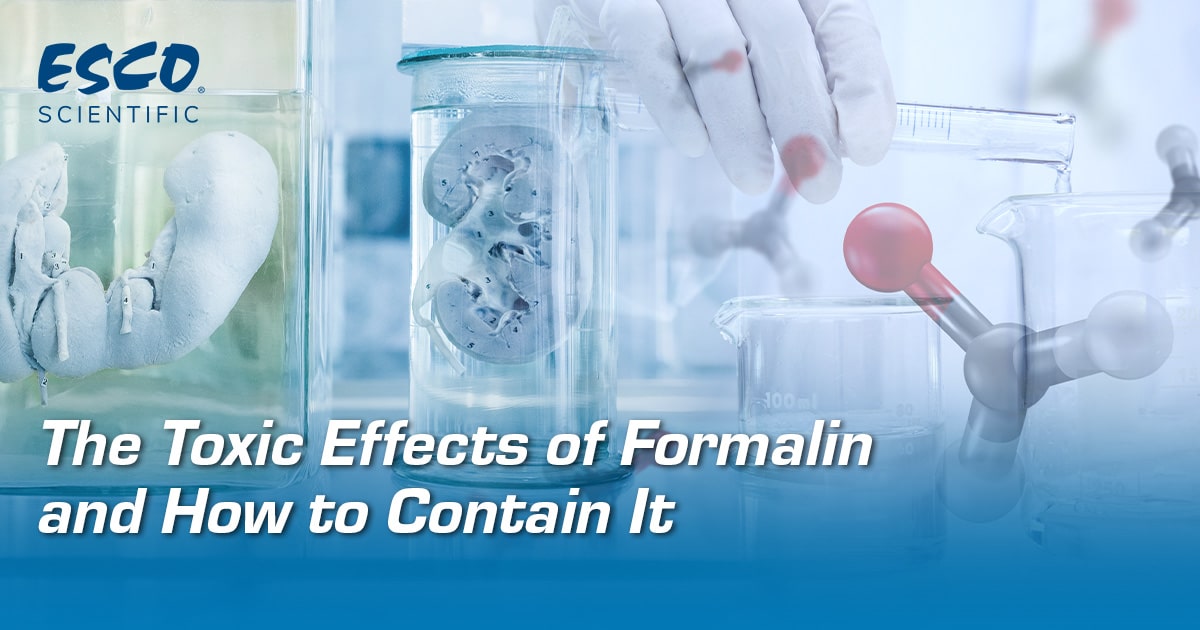
Formaldehyde is a colorless gas, often used as an aqueous solution called formalin. Formalin solutions contain up to 40% formaldehyde and at least 15% methanol as a stabilizing agent. Both formaldehyde gas and solutions have strong, pungent, and characteristic odors. These compounds are commonly used as a disinfectant, antiseptic, fixative, and a chemical additive. Due to its wide range of applications, it is important to be aware of the health hazards and safety precautions when working with this chemical.
USES OF FORMALDEHYDE / FORMALIN

Preservative in medical laboratories

Chemical additive in household products, glues, coatings, and plywood

Disinfectant

Industrial fungicide and germicide

Determining presence of opium-based drugs through color test
HEALTH HAZARDS
If formaldehyde is present in the air at concentrations above 0.1 ppm, it can cause watery eyes, skin irritation, difficulty in breathing, coughing, and some burning sensations in the eyes, nose, and throat.
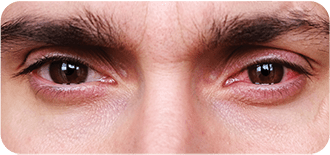
Eye irritation from fume exposure
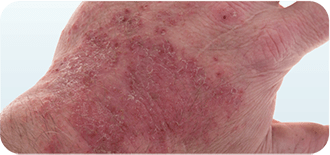
Severe allergic reaction
Formaldehyde and formalin are known carcinogens, and chronic exposure may lead to birth defects and severe respiratory problems. These compounds are highly toxic when ingested, inhaled, or absorbed through the skin. Also, these chemicals are highly reactive with oxidizers and at high concentrations; it is considered as a combustible liquid.
Moreover, a reaction between formaldehyde and hydrochloric acid (HCl) produces bis(chloroethyl) ether vapor which is a very potent carcinogen.
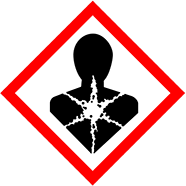
HEALTH HAZARD
EXPOSURE AND PERMISSIBLE LIMITS
Formaldehyde is corrosive and an air concentration of 2 ppm may quickly result in eye irritation while exposure to 20 ppm can cause permanent clouding of the cornea. In addition, formaldehyde is also a sensitizing agent wherein constant exposure can result in more symptoms even at lower concentrations. Symptoms include coughing, eye and skin irritation, vomiting, and diarrhea.
The OSHA formaldehyde standard (29 CFR 1910.1048) intends to protect workers from occupational exposure by setting the following permissible exposure limit (PEL):
- PEL for formaldehyde in a workplace is 0.75 ppm measured in an 8-hour time-weighted average (TWA).
- Short-term exposure limit (STEL) of 2 ppm for a 15-minute period.
PROPER HANDLING AND SAFETY PRECAUTIONS
Due to the health hazards associated when using formaldehyde and formalin, here are some tips for safe handling:

Always wear complete PPE during handling. Chemical goggles are important to minimize vapor exposure to the cornea.

Keep sources of ignition away from formalin solutions.
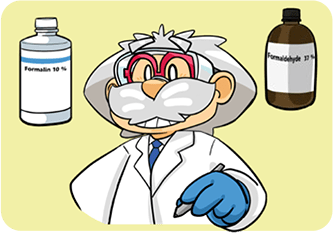
Properly label containers with the chemical's name, concentration, and hazards.

Store labeled containers in chemically compatible cabinets, away from extreme heat and flame.

Always work or handle formalin in an appropriate fume hood.
ESCO SCIENTIFIC OFFERS THE RIGHT SOLUTION!
Laboratory applications involving this toxic chemical can now be accomplished safely and economically with Esco Ascent™ Opti Formax (SPF). This ductless fume hood is designed to safely dispense formalin solutions while providing superior fume containment. The fume hood’s enhanced features provide the operator with a high level of usability, comfort, and safety.

With Ascent™ Opti Formax, your safety is guaranteed!
References:
[1] Formaldehyde Fact Sheet. (2011). Occupational Safety and Health Administration. https://www.osha.gov/sites/default/files/publications/formaldehyde-factsheet.pdf
[2] Formaldehyde Fact Sheet. (2012). Office of Environment, Health and Safety, University of California. https://ehs.berkeley.edu/sites/default/files/publications/formaldehyde-fact-sheet.pdf
[3] Formaldehyde Safety. (2019). Division of Research Safety Illinois. https://drs.illinois.edu/Page/SafetyLibrary/Formaldehyde
[4] Formaldehyde Safety Data Sheet. (2021). Sigma Aldrich. https://www.sigmaaldrich.com/PH/en/sds/SIGMA/F8775.
[5] Formaldehyde Solutions. (2017). Canadian Center for Occupational Health and Safety. https://www.ccohs.ca/oshanswers/chemicals/chem_profiles/formaldehyde.html